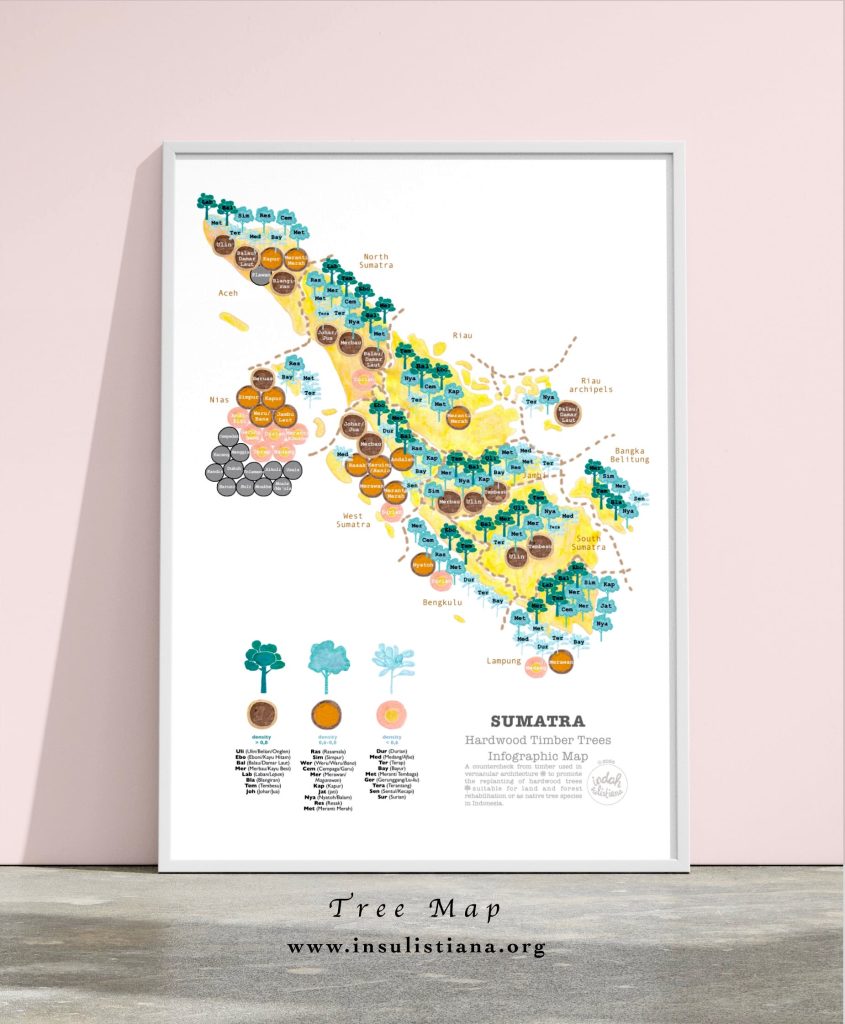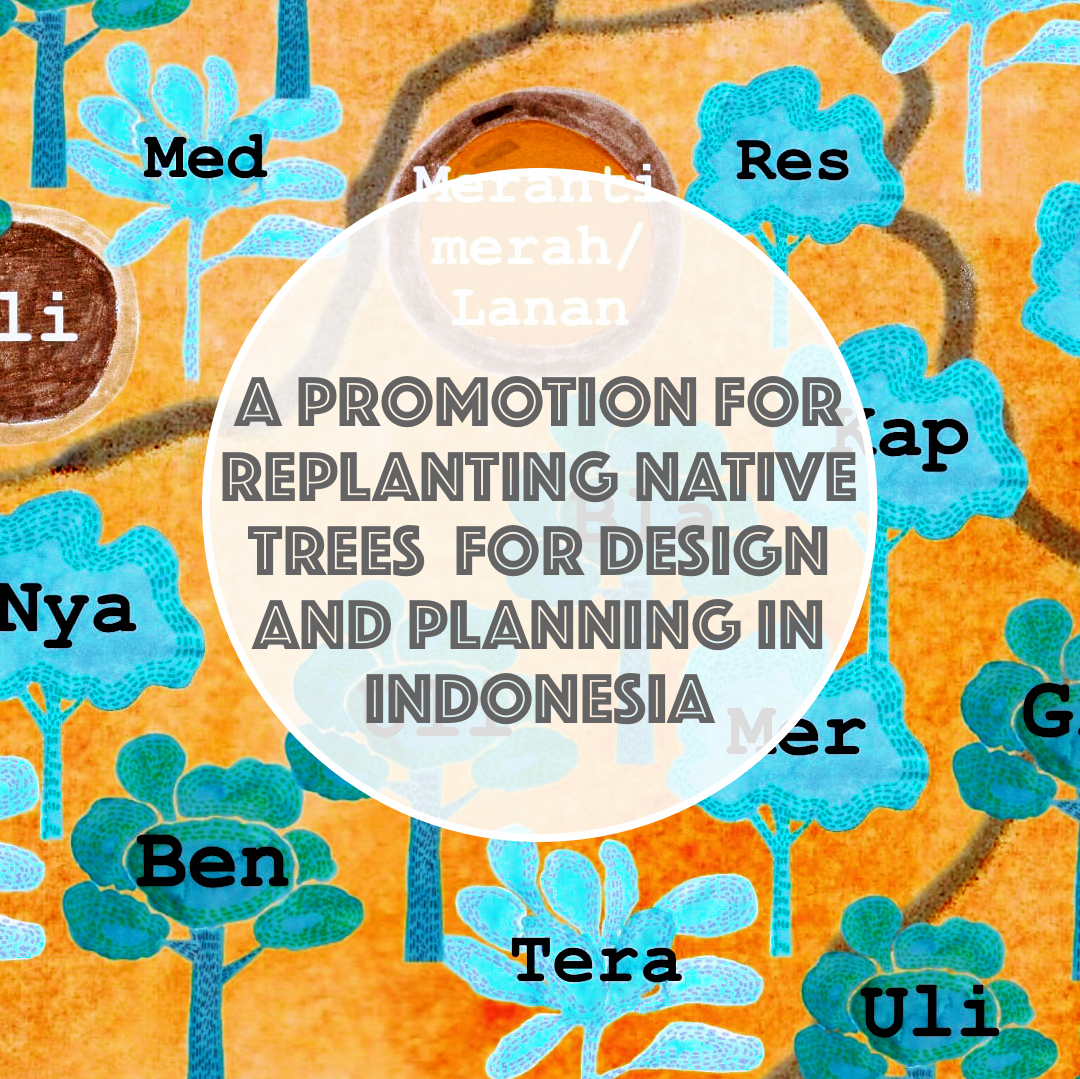The Infographic Maps can be recommendation list for young people who want to know their local place, who really like to explore their local forest and for those who get exciting to involve in the blossom of the nature and are very care to planting the trees. As it is very little hope to speak about replanting trees to baby boomer generation who have worked so hard to support their families with wealth, I see this more as different task and function of each generation. It is still make sense for millenials to start the drive, but the youngers have more chance to care the trees and watch them grow into strong and be impactful.
As millenials who have spend about 7 years dissertation research with past work assessment and training with the circumstance in the topic of timber architecture and old existing buildings, and to elevate the works from other researcher and practices in forestry field whose works I am admire, I composed these Infographic Maps to make the subject visually appealing for nowadays demand, but also addressing the wake up call in the same time. Combining the information from two sides; timber architecture and forestry, of course it is impossible to list all the tree species. Instead, the purpose is to make the shared value amongst timber architecture and forest-land rehabilitation and their diversity to be understandable. The first degree of priority at this time is on the hardwood tree species, meanwhile the non wood to be the next.
This Infographic Maps can be used as a tool to double-checks between hardwood trees for land and forest rehabilitation and the hardwood names traced back from their used in traditional wooden constructions. In this sense, it is to affirm that the vernacular architecture/old building have actually being silent presentation which all the time saying about the trees to replanting. As some woods used were and are flagship species, some were and are least important. Some gone endangered, some unidentified (or unrecognised local names) and no more found.
Because of high value in densities, hardness and durability of these hardwoods, local people in the past relied on them for constructions in earthquake prone and flood/wet environment of ground speciality. As the hardwoods need slow and long time to grow to forming high density wood, they are excellent CO2 absorber in the long run. If this qualities are still irreplaceable and still no technology can substitute their strength, hardness and durability to help humankind enduring their settlement, it will be wise for not solely focusing on fast growing trees but instead, as well replanting such hardwood tree species in their biodiversity setting along with other non-wood plants for long term disaster mitigation and climate change adaptation.
Please check the Infographic Maps below as the excerpt and end result representation of my research dissertation for wider audiences and as tools to promote them to be included in design, planning and management even social or participatory forestry in Indonesia.
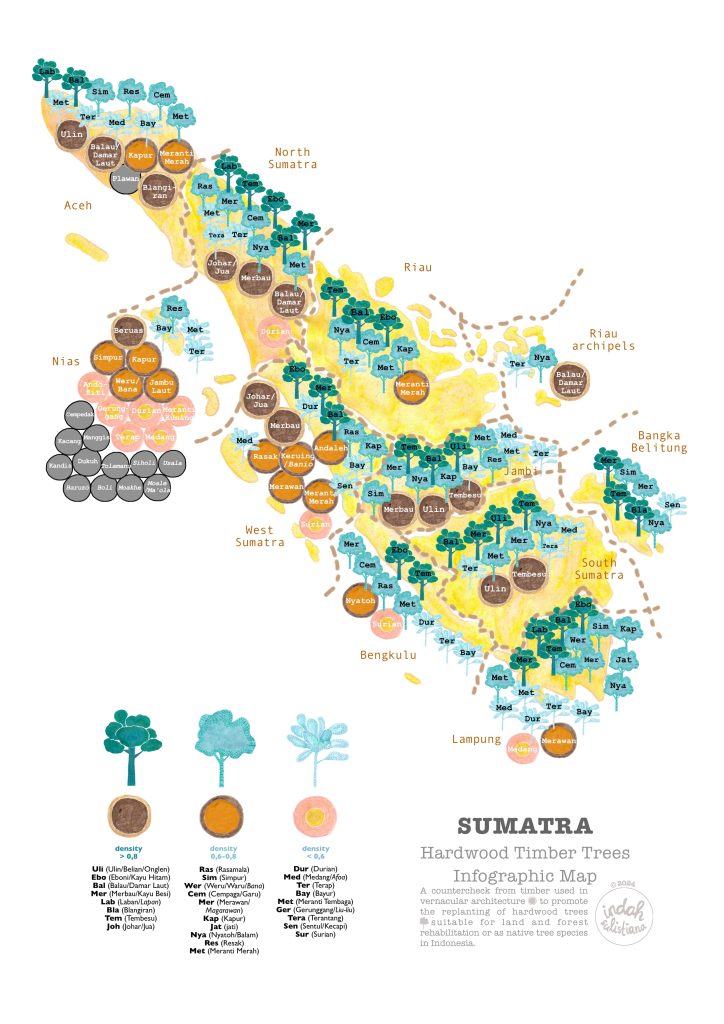
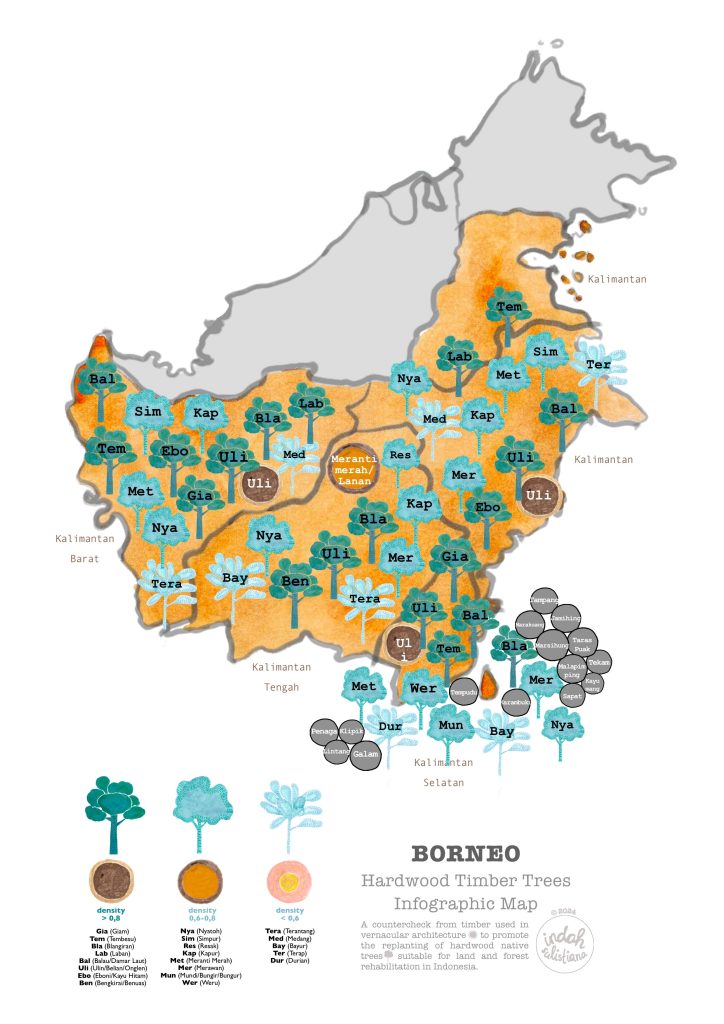

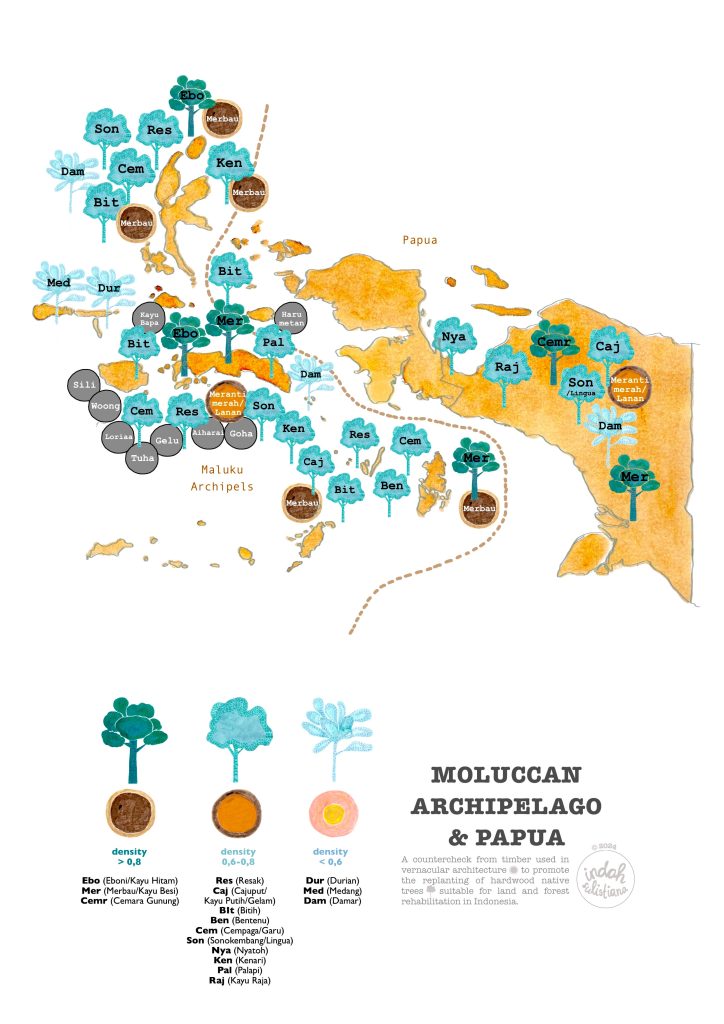

- If you want to know the background of this works, you can visit my completed Dissertation : Transformation of Timber Technology from Traditional to Modern
The print version of Infographic Maps can be ordered and shipped to your address. The A4 prints are available for EU region as in my shop down below. For outside EU Region or custom size, please contact my email insulistiana82@gmail.com.
